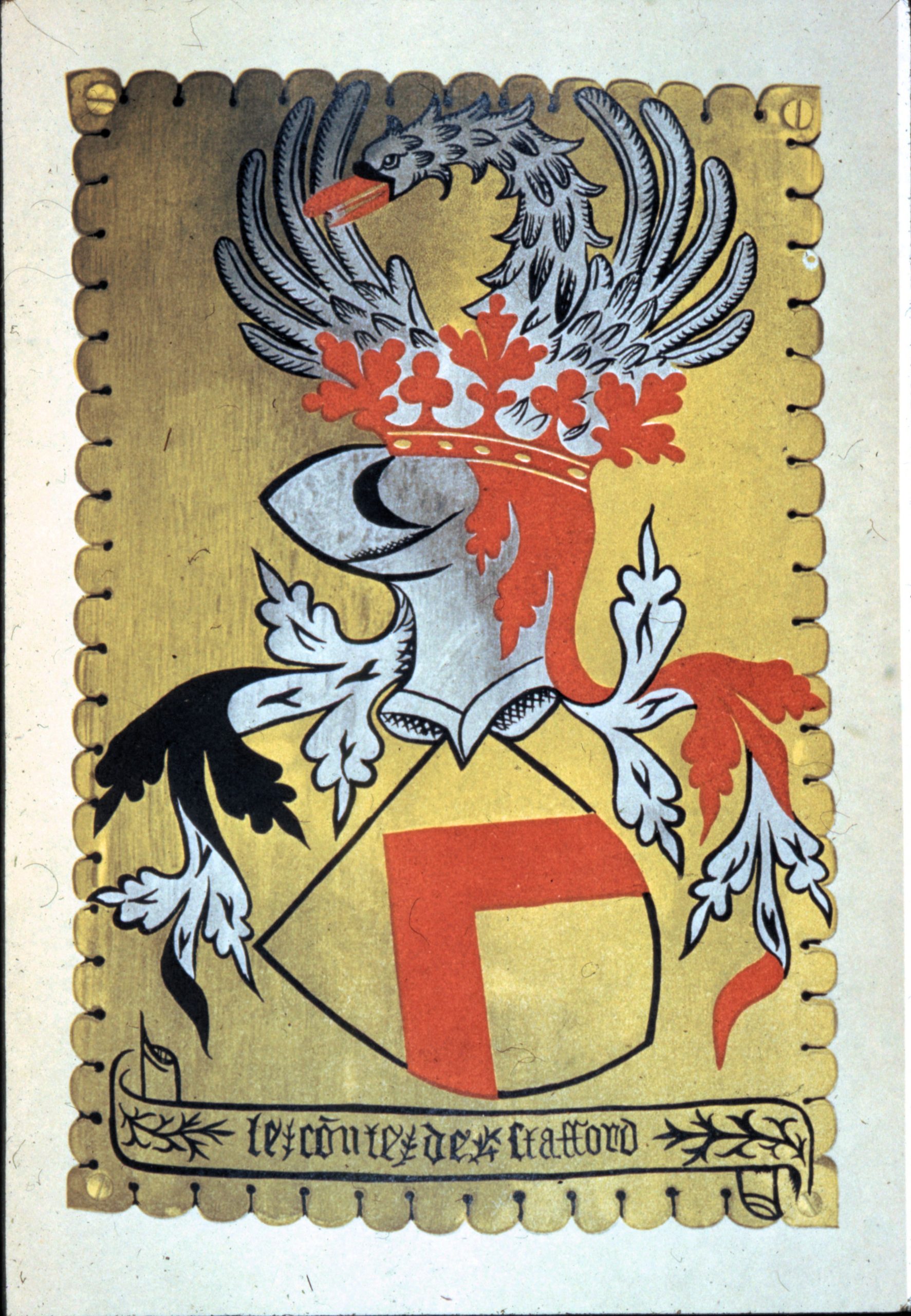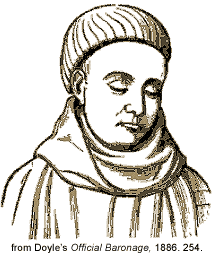Humphrey Stafford, 1st Duke of Buckingham
Humphrey Stafford 1st Duke of Buckingham was born in Stafford in 1402. He died aged 58 at the Battle of Northampton. Humphrey Stafford had a rich pedigree. He was a great grandson of King Edward III and related to many of the major families of the age. Only aged eleven months when his father died at the Battle of Shrewsbury, Humphrey was a ward of Queen Joan of Navarre and held a reduced income for some twenty years until being in full receipt of all of his inheritance.

Humphrey Stafford’s Military and Political Career
Humphrey came of age whilst the Hundred Years War was still being fought. It provided him with opportunities to gain experience in warfare and diplomacy. His noble birth saw him appointed to important roles.
- Lietenant General of Normany (1430 – 1432)
- Constable of France and Governor of Paris (1432 – 1436)
- Captain of Calais (1441 – 1451)
- Ambassador to France (1446)
Prior to his appointment as Lieutenant General of Normandy Humphrey Stafford had already gained military and political experience. He had campaigned in France alongside King Henry V, at whose side he was when the King died in 1422. Despite his relative youth, Stafford was appointed to the Royal Council which was to govern in the minority of King Henry VI. He was a regular attender at Council meetings and gained a reputation as being an effective mediator.
Stafford as a Mediator
Humphrey Stafford had diplomatic roles in bringing a resolution to disputes between the Archbishop of Canterbury, Henry Chichele, and Peter Duke of Coimbra [Who was a grandson of John of Gaunt]. He also acted, with others, to limit friction between Cardinal Beaufort and Humphrey Duke of Gloucester. It was to Humphrey Stafford that the Council turned when the matter of Henry Beaufort’s rise to the rank of Cardinal presented a conflict of interests.
France
In 1429 Humphrey Stafford accompanied Henry VI to Paris for his coronation as King of France. By now he had been created a Knight of the Garter and in France he was to be given roles of some importance. He was charged with the defence of Paris, and given the important role of being Lieutenant General of Normandy. In that capacity he was present at the interrogations of Joan of Arc. He was rewarded for his work in Normandy with his creation as Count of Perche. This region of Normandy had great potential to bring Stafford a handsome income, but was one of the regions that was on the border between English held and French held territories, so was of military significance and would only be lucrative should Stafford and other commanders be successful in defeating the French. He held Perche until the fall of Normandy in 1450.

Calais
Humphrey Stafford held roles in Calais that were of great importance. The Captaincy of Calais was only given to men of great standing, and Humphrey Stafford was given the task in 1441. He had already been, in 1436, one of the commanders who had travelled to Calais to face the threat of a Burgundian siege [the Burgundians had withdrawn before the English relief force arrived].
Expansion of Stafford’s influence in England
Humphrey Stafford’s estates were vast. He had lands and interests in many parts of the country and from his mother’s death in 1438, had control of estates which she had held in Dower. This made him incredibly wealthy. His wealth was such that only the King and the Duke of York had more lands or greater income. And he also had increased influence. This came from being given responsibility for overseeing Duchy of Lancaster lands across the north Midlands.
Humphrey Stafford 1st Duke of Buckingham
Humphrey Stafford was elevate to the rank of Duke of Buckingham in 1444. He continued to act as Captian of Calais and from 1450 was also the Lord Warden of the Cinque Ports. The Duke of Buckingham played a role in tackling the rebellion led by Jack Cade in 1450 and provided many men for the defence of London and the King. He remained a member of the King’s Council and was influential at the standoff between the Duke of York and Crown at Dartford. He maintained his reputation as being a mediator throughout the political frictions of the early 1450’s, acting as a Councillor in governments led by both the Dukes of Somerset and York.
First Battle of St. Albans
The Duke of Buckingham was with the King’s party when the first battle of St. Albans took place. It was through Buckingham that negotiations between the two parties took place. Humphrey Duke of Buckingham was injured in the fighting that took place at St. Albans in 1455. There is a suggestion that he only escaped being slain at the intervention of the Duke of York. He is known to have rewarded retainers for their attendance at this clash, though whether or not these men had arrived in time to fight is not clear.
1456-1459
Humphrey Duke of Buckingham opted to seek a peaceful resolution to the disputes between the Queen’s party and that of the Duke of York. This was evident at the Great Council meeting of October 1456 and saw Buckingham being distanced from Queen Margaret and Duke of Somerset for some time. By 1459 though, he had chosen to align himself with the Queen and her followers. This led to his retinue playing a role that some historians believe was decisive at Ludford Bridge [Pugh and Rawcliffe in the 1970’s suggested the size of his retinue at Ludford was a key factor in the Yorkists taking flight]. Such was Humphrey Duke of Buckingham’s importance to the Queen’s party in 1459 that he was rewarded with lands confiscated from the Yorkist, Sir William Oldhall, by the Coventry Parliament of 1459. [Lands with an annual income of £800, a large sum for the time].
Death in the Battle of Northampton
The Battle of Northampton on 10 July 1460 brought about the death of Humphrey Stafford Duke of Buckingham. He and his retinue formed a sizeable part of the Lancastrian force in the battle. However his position was overrun by Yorkists following the change of sides by Lord Grey of Ruthin and the Duke along with other nobles such as the Earl of Shrewsbury and Lord Egremont were killed.
